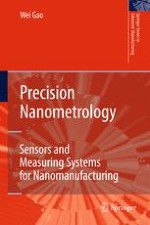Precision Nanometrology describes the new field of precision nanometrology, which plays an important part in nanoscale manufacturing of semiconductors, optical elements, precision parts and similar items. It pays particular attention to the measurement of surface forms of precision workpieces and to stage motions of precision machines. The first half of the book is dedicated to the description of optical sensors for the measurement of angle and displacement, which are fundamental quantities for precision nanometrology. The second half presents a number of scanning-type measuring systems for surface forms and stage motions. The systems discussed include: • error separation algorithms and systems for measurement of straightness and roundness, • the measurement of micro-aspherics, • systems based on scanning probe microscopy, and • scanning image-sensor systems. Precision Nanometrology presents the fundamental and practical technologies of precision nanometrology with a helpful selection of algorithms, instruments and experimental data. It will be beneficial for researchers, engineers and postgraduate students involved in precision engineering, nanotechnology and manufacturing.
